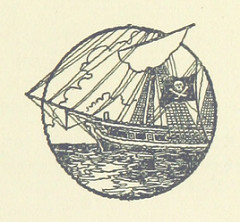
Which nineteenth-century novels sold the most copies over their first few years?
Part One on instant successes is here.
Last week we took a dive into the nineteenth-century novels that saw the highest sales in their first few months after publication. This week, we’re going to look at novels that maintained brisk sales over their first couple of years. Generally, this means that they would quickly have gone into second or subsequent editions after selling the entirety of their first run; in some cases, we’re again looking at serialised fiction.
Again, the majority of my data comes from research conducted in the twentieth by Richard Altick; I’ve just pulled out all the novels and ranked them! You can find a list of relevant citations below, as well as a recommended citation format for this blog post (in case you should want to use it).
Unsure if this data accurately reflects buying and reading patterns in nineteenth-century Britain? You’re quite right – and please check out the caveats in our previous post to see why!
Short-term successes
19th century novels which sold well in their first months of publication (up to two years)
1 George Du Maurier, Trilby, 1894
80,000 in three months [Altick 1957, p386]
2 Harriet Beecher Stowe, Uncle Tom’s Cabin, 1852
Between April and October 1852, 150,000 [Altick 1957, p384]

3 Harriet Beecher Stowe, Dred: A Tale of the Great Dismal Swamp, 1856
165,000 in the first year [Altick 1969, p201]
4 Thomas Hardy, Jude the Obscure, 1892
20,000 in three months [Altick 1986, p238]
5 R. L. Stevenson, Dr Jekyll and Mr Hyde, 1886
40,000 in six months (after a good review in the Times) [Altick 1969, p202]
6 William Harrison Ainsworth, Windsor Castle, 1849
Reissue of novel in a cheap collected edition – 30,000 “in a short time” [Altick 1957, p384]
7 Frederic William Farrar, Julian Home, 1859
13,000 within a few months [Altick 1969, p201]
8 Marie Corelli, The Murder of Delicia, 1896
43,000 in one year [Altick 1986, p283]. For more on The Murder of Delicia, check out our previous post on bestsellers!
9 Walter Scott, Rokeby, 1813
10,000 in three months [Altick 1957, p383]

10 H. Rider Haggard, King Solomon’s Mines, 1885
31,000 in first 15 months [Altick 1969, p202]
11 Hannah Moore, Coelebs in Search of a Wife, 1809
14,000 in eight months [Altick 1969, p201]
12 J. M. Barrie, The Little Minister, 1891
24,000 in first 14 months (including 7000 sales in British colonies) [Altick 1969, p202]
13 Thomas Hughes, Tom Brown’s Schooldays, 1857
11,000 first nine months [Altick 1957, p385]


14 Charles Lever, Jack Hinton, 1841-2
14,000 copies in one year* [Benson, p36-7]
15 James Grant, The Yellow Frigate, 1855
12,000 in one year [Altick 1986, p235]
16 Walter Scott, Waverly, 1814
First edition sold 1000 in 5 weeks; 6000 total in 6 months [Altick 1957, p383]
Footnote:
*”Nearly 14,000 copies of the first part of the trilogy [Our Mess], Jack Hinton, were sold, issued between December 1841 and December 1842 in thirteen monthly numbers… The second part, Tom Burke of Ours, was produced in twenty-two numbers from early 1843 to the end of 1844. The contract was revised for the third part, The O’Donoghue, to provide for profit sharing to begin at 10,000 copies. But sales of Lever’s works slumped in November 1844 and shortly afterwards Curry and Co. went into bankruptcy. The reasons for the sudden collapse in Lever’s popularity are unclear but Edmund Downey, Lever’s biographer and himself a highly successful Irish publisher in London of a later generation, notes that his work had been repeatedly attacked in the Nation, which then had a vast and influential circulation, and it seems likely that Lever’s brand of fiction was a casualty of the changing sentiment in nationalist politics (p36-7).”
Benson, Charles. “The Dublin Book Trade”. The Irish Book in English 1800-1891, ed. Murphy, James H. Oxford: Oxford University Press, 2011.
Sources
Altick, Richard D. The English Common Reader: a social history of the mass reading public, 1800-1900. Chicago: University of Chicago Press, 1957.
- This is freely available at the above link as a PDF. The Internet Archive also holds copies that can be borrowed if you sign up for a free account.
Altick, Richard D. “Nineteenth-Century English Bestsellers: A Further List”. In Studies in Bibliography 22, 1969, pp197-205.
Altick, Richard D. “Nineteenth-Century English Bestsellers: A Third List”. In Studies in Bibliography 39, 1986, pp235-41.
Benson, Charles. “The Dublin Book Trade.” The Irish Book in English, 1800-1891, edited by James H Murphy, Oxford University Press, 2011.
How to cite this post
Wade, Karen. “The Bestselling English Novels of the 19th Century, Ranked: Part Two.” The Sea of Books, 4/3/2024, https://theseaofbooks.com/URL.

I’ve only read the Rider Haggard and the Stevenson titles, though I do have a battered paperback of Trilby. Still, an interesting mix here of the still known with the more obscure books.
LikeLiked by 1 person
I’m in a similar position myself, apart from Waverley, which I read for work reasons! I’m fascinated by the links between sales figures and longevity (or the lack thereof), and the fact that some of the most enduring 19th century novels – everything by Jane Austen springs to mind – didn’t make a big splash on first publication.
LikeLiked by 1 person